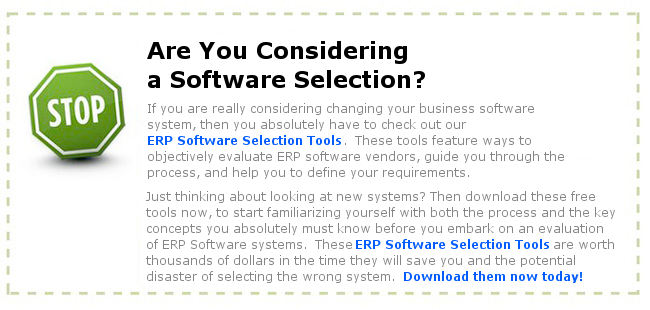Chris Shaul
ERP seems to be on the move again this year. Vendors are ramping up, customers are calling again, selection projects are beginning. Why now? With all of the things going on in the world, what is it that is driving the return of ERP and technology initiatives?
This can be attributed to several factors. First is the rush to implement prior to the year 2000. In the late 1990’s, every company was working to shore up their systems to prevent the dreaded millennium bug. Companies that couldn’t patch or were not even sure about it, moved in droves to the ERP market. It was a frantic time. Now, six and seven years later, the lifecycle of those original ERP systems is coming due. Companies that implemented back then are now reconsidering their systems and are either performing major upgrades or migrating to new solutions.
Second was the freeze on IT spending in the post 9/11 era. After 9/11, companies invested in very little infrastructure and spent more of their budgets on IT security related issues. It is only of late that companies are loosening the purse strings again to invest in infrastructure and strategic systems.
Lastly, because of the IT downturn in the early part of the 2000’s, there has been a tremendous consolidation of software providers. Sage and Infor have quickly aquired a multitude of smaller software providers and are rebranding and in some cases consolidating their offerings for the small and medium enterprises. Microsoft and Oracle have recently gobbled up competing ERP offerings. Microsoft with the acquisition of Navision/Axapta, Great Plains, and Solomon. Oracle with the acquisition of JD Edwards and Peoplesoft. The result of this consolidation is a more focused message and a clearer landscape of providers. In the mid to larger enterprises, t is almost a choice of platform rather than options. You have the SQL Server camp and the Oracle camp. That is for a different article. But clearly, companies interested in choosing new software now have a smaller field of vendors to look at. Instead of a selection, it is now a choice of perhaps two ways to go.
This comeback is not without problems. i This resurgence of ERP and infrastructure spending is creating a resurgence of IT Jobs and in some cases companies are starting to lose good people to higher paying jobs and are having difficult times in finding talent. Companies are having to implement ERP solutions with a tighter staff level than they did in the 1990’s. Companies are simply leaner than they used to be and so for them to implement now with their current staffing has created new risks to the implementation.
The bottom line message is that as this market heats up, so too will the need for qualified individuals. People will make the ERP implementation successful.
Related articles:
http://australianit.news.com.au/articles/0,7204,16852845%5E26317%5E%5Enbv%5E15306-15321,00.html
http://www.thechannelinsider.com/article2/0,1895,1842422,00.asp
http://www.dqindia.com/content/industrymarket/focus/2004/104011202.asp
http://www.erpandmore.com/content/Oracle-and-ERP-tools.htm
Chris Shaul is a Sr. IT Consultant and specializes about ERP selections and implementations.
